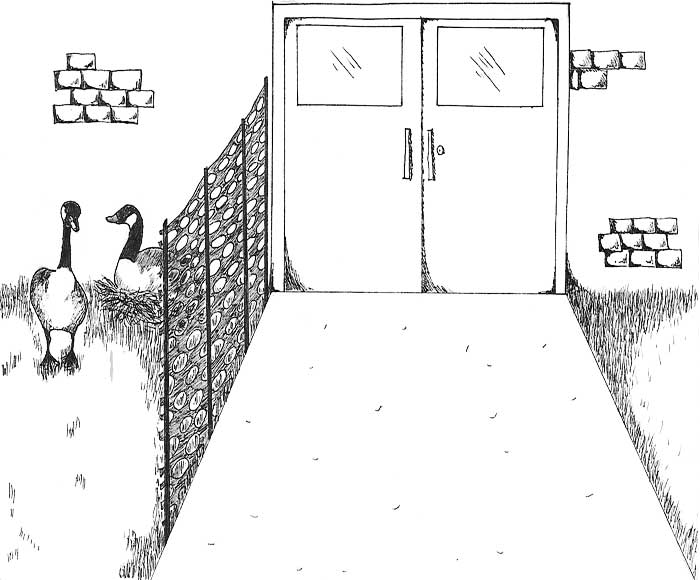Canada geese attacking people or cars are a sure sign that there is a goose nest nearby. Geese are well-known for their defensive nesting behaviour, and they often nest in busy urban areas in close quarters with people and cars. Sometimes the nest isn’t obvious—it might be in a planter or on a rooftop nearby.
Dealing with aggressive geese
Barrier
Put up a visual barrier (such as a section of snow fence), between the goose’s nest and the walkway. The barrier doesn’t have to be solid, nor should it surround the whole nest. The visual barrier will make the male goose feel less threatened by passersby, and he should calm down. Remember that he is only trying to protect his family.

visual barrier for nesting geese. To deter geese from attacking, the barrier must be erected between the nest site and area where attacks have occurred.
Give geese their space
Put up signs warning customers, staff, or residents about the geese, and ask them to use another entrance if possible. Remember that the geese are only trying to protect their family.
Be patient with defensive geese
Geese are most aggressive at the beginning of the nesting season, when they’re establishing territory. Once they get used to all the action surrounding them, they tend to settle down.
Keep being patient—geese don’t stick around
Once the female starts sitting on the eggs, they will hatch in about 25 days. The baby geese can walk within hours of hatching, and the parents will lead their new family away from the nest area.
Plan ahead to discourage nesting geese in the future
For next year, think about changing the landscaping around your building. Planting shrubs, tall grasses, or trees can break up the sightlines and make your property a less attractive nesting spot for geese.
Canada Geese are federally protected
Canada geese are federally protected under the Migratory Birds Convention Act. It is against the law to move, destroy, or interfere with the nest or eggs without a permit.

